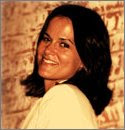Creative Space to Commonplace
the evolution of blogs
With the introduction of blogs, we’ve been witness to the rise of a new self-publishing medium that has fundamentally changed the we participate in the democratic process. But just as Americans became accustomed to industrialization, a technology revolution and globalization (with a few other innovations and revolutions in between), the Web and blogs will eventually move from avant-garde to average.
brave new world
In fifteen years on the web, we’ve evolved from computers talking to one another, to individuals talking to the world. Blogs represented a major change in Internet usage and purpose. Pre-blog, only those with enough technical know-how and resources could publish on the Web. Then the paradigm shifted, moving HTML into the background and every-man publishing tools into the foreground.
A 2008 Technorati study showed that there were over 112 million blogs in existence, not accounting for the over estimated 70 million blogs in the China Network Information Center. While it’s been difficult to accurately track blog creation, certainly blog use has exploded. Early adopters have taken advantage of the persuasive stage a blog provides - businesses build communities of customers, budding journalists publish without big start-up costs and artists have a virtual gallery. It appears that people are actually reading blogs as well - blogs that house compelling content or are persistently and creatively promoted.
it’s just my life - on the web
Early adopters of blogs tended to be young, male and affluent but blog use is already shifting to a more general populace. Early on, blogs were lists of links and resource tools; today they often serve as a journaling tool, a place to house information the writer wants to push out to an audience.
As blog creation really takes hold in the mainstream, the purpose of a blog will become less about selling an idea, a business or a story and more about a having a place to house who you are and what you’re doing - no matter how mundane - through various phases of your life. Instead of creating a blog for say, your thoughts on global warming to promote your energy business, or creating several separate blogs for different interests, each person will have one central Web site where they can house anything they want - general biographical information, an address book with different “groups,” a résumé or CV, a business profile, a personal profile, pictures of the kids, recipes, vacation itineraries, yoga moves or simply a thought for the day. Each personal Web site can be as unique as the person that it belongs to and from day to day, as things change in a person’s life, different content can take center stage. If this sounds like a complete abandonment of privacy, it probably is, but just as it became an expectation for businesses to have a presence on the web, it will become commonplace for people as well. There is already a generational gap in how we view privacy. Today’s adults tend to be more sensitive while kids post anything - from who they “like” to what kind of sandwich they just ate - out for public consumption without a second thought.
Blogs and personal websites offer a segue from the beehive that is Facebook and MySpace to people having their own sites and building their own communities for different reasons. I’ve read several articles in mass-subscription magazines recently that encouraged people to purchase their names as a url. Many of us made this move long ago but it will be interesting to someday see people compete for the real i.e. “SuzanneBeane.com.” It will take identity wrangling to a new space. Perhaps we could consider phone numbers as domains. I don’t know if this is possible, but some people may like for their cell phone and domain name to be the same.
Blogs have already given power to the people - but only some people thus far. As adoption broadens as it surely will, there will be a time when blogs / Web sites will be used for very common reasons by very common people.
